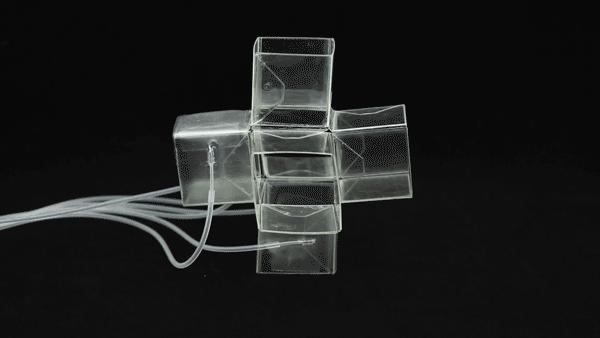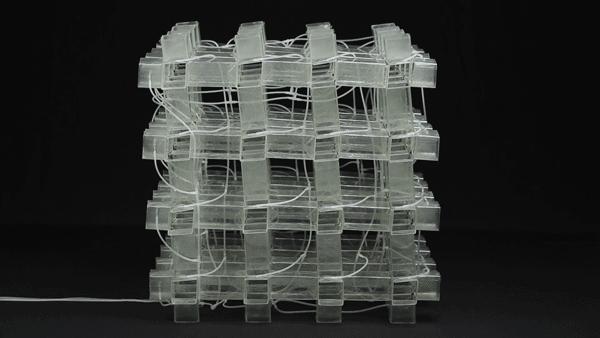
According to the team, the structural metamaterial - which is is tuneable and self actuated - can change size, volume and shape, and can fold flat to withstand huge weights before popping back up undamaged.
"We've designed a three-dimensional, thin-walled structure that can be used to make foldable and reprogrammable objects of arbitrary architecture, whose shape, volume and stiffness can be dramatically altered and continuously tuned and controlled," said Johannes T. B. Overvelde, first author of the research paper, which appears in the journal Nature Communications.
"It works from the nanoscale to the metre-scale and could be used to make anything from surgical stents to portable pop-up domes for disaster relief."
The structure is formed from extruded cubes with 24 faces and 36 edges. Like origami, the cube can be folded along its edges, which act like hinges. Pneumatic actuators were embedded into the structure, which can be programmed to deform specific hinges, changing the cube's shape and size, and removing the need for external input.
The team connected 64 of these individual cells to create a 4x4x4 cube that can grow and shrink, change its shape, change the orientation of its microstructure and fold completely flat. According to the researchers, the material the can be embedded with any kind of actuator, including thermal, dielectric or even water.

"We not only understand how the material deforms, but also have an actuation approach that harnesses this understanding," said research lead Katia Bertoldi. "We know exactly what we need to actuate in order to get the shape we want."
Once scaled up, potential applications of the technology include dynamic structures such as rapidly deployable shelters, adaptive buildings, and retractable roofs.




Project to investigate hybrid approach to titanium manufacturing
What is this a hybrid of? Superplastic forming tends to be performed slowly as otherwise the behaviour is the hot creep that typifies hot...